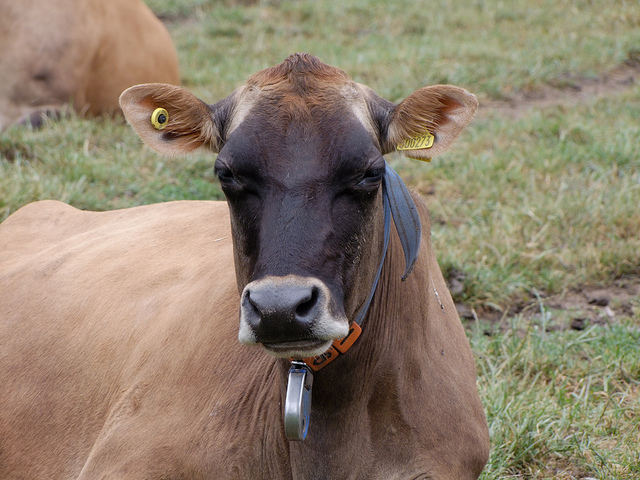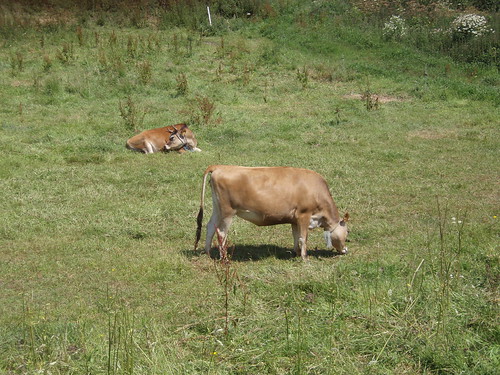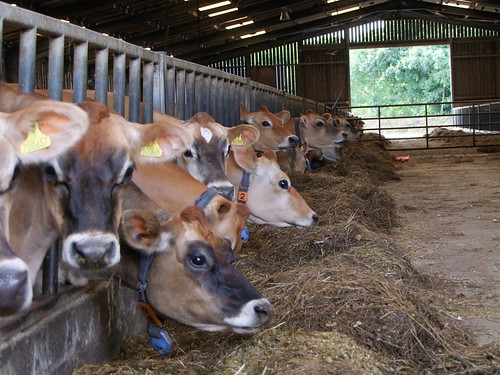
Origins of the Breed
The history of the Jersey cow can be traced back to 6000 BC in the middle east and although it is difficult to prove our cows are probably descendants from the wild species Bos Primigenius, better known as Aurochs.
Heritage of the Breed
Jersey farmers always kept cows but some farmers were importing and keeping French cows. In 1786 the States of Jersey passed a new law, whereby any farmer who brought French cattle into Jersey would be fined 200 livres (about £3) for each animal. In 1878 the law was passed so that no cows could be imported into the island. This law has ensured the purity of the Jersey breed ever since. The Jersey Herd Book was founded in 1866 by the Royal Jersey Agricultural and Horticultural Society (RJA&HS), whereby virtually all island herds became pedigree registered.

Jersey Cows in a field
It is known that caws from Jersey were being exported as early as the 1700s. With its good looks, gentle nature, strong constitution and rich milk, the Jersey cow soon became famous and farmers began selling their Jerseys’ all over the world. The Jersey cow is now the second largest dairy breed in the world. The importance of farming and cattle breeding in island life can still be seen at the Parish and Island Shows which attract cattle breeders from around the world who look to Jersey as the pure source of the Jersey breed.
Breeding
Over the years farmers in Jersey have sought to breed healthy cows that produce top quality milk. This has resulted in Jersey cows being renowned for the quality of the milk they produce, which has long been recognised as being rich and creamy in texture and slightly yellow in colour.

Jersey Cows
Jersey cows are also renowned for their longevity, having on average five calves. A heifer (young female cow) starts breeding at the early age of 15 months, known as “a heifer-in-calf” and will carry the calf for 9 months before birth. The Jersey cow’s diet consists of grass during late spring and summer. This is supplemented with silage (picked grass), protein and nuts. Some cows wear a blue transponder around their necks, which controls their food intake in the milking parlour and in the fields. A mature Jersey cow weighs approximately 450kg.
Milking
Depending on the season cows are milked two or three times a day through a parlour.

Jersey Cows in a Parlour
The herdsman will clean the udder and then put the milking machine onto the cow by placing under each teat a teat cup which is held onto the udder by vacuum. The vacuum pulses on and off in the teat cup, mimicking the action of a calf sucking and the cow lets down her milk. Once the milk stops flowing, the machine senses that milking has stopped and automatically removes the milking clusters (ACR). The herdsman will spray the teats with an antiseptic combined with glycerine that stops any bacteria entering the udder and keeps the teats soft and supple. Once the warm milk has left the udder, it is filtered and weighed and then stored refrigerated below 5 degrees centigrade. At the end of each milking, all the parlour equipment is washed and sterilised.

